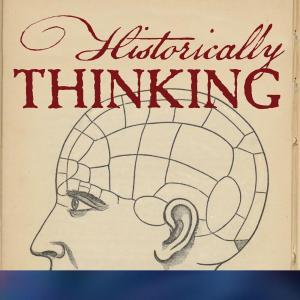Historically Thinking

Episode 372: Glorious Lessons
Colonel John Trumbull, Artist John Trumbull must be one of the only artists in the history of American art to insist upon being addressed by his military rank; he was Colonel Trumbull until he died. But it was not John Trumbull’s feats in battle or in managing administrative correspondence that won him fame among his contemporaries, but what he painted on canvas. Hanging in the rotunda of the US Capitol are four of the paintings in which he sought to preserve memories and paint a history of the American Revolution, but also teach something of the ethics appropriate to war; of democratic and republican virtue; of political power flowing from a sovereign people; and of the need to relinquish that power when called to do so. To this day some of the most recognizable images of the Revolution are almost certainly something painted by Trumbull–most likely either The Death of General Warren at the Battle of Bunker’s Hill, or the painting known simply as The Declaration of Independence. If occupying space rent-free in posterity's imagination is ever the ambition of an artist, then Trumbull succeeded, and then some. With me today to discuss the life, art, and civic teaching of John Trumbull is Richard Brookhiser. Beginning with his 1997 book Founding Father: Rediscovering George Washington, Richard Brookhiser has written a shelf of books on the American founders, the most recent of which is Glorious Lessons: John Trumbull, Painter of the American Revolution. For Further Investigation Highly recommended: "Let This Be a Lesson: Heroes, Heroines, and Narrative in Paintings at Yale," a brilliant series of lectures on history painting by John Walsh, from which I've learned a lot. See particularly Lecture 7, on Benjamin West, and Lecture 8, on John Trumbull, focusing on his painting of the Battle of Bunker Hill. There are many HT episodes on related issues. You might be interested in Episode 163, on Joseph Warren, the first martyr of the American Revolution, whose death is the focus of Trumbull's first history painting; or Episode 176, which focuses heavily on the images of revolutionary victors created by Trumbull and his contemporaries (some of whom were his friends and acquaintances)






 Visit Podcast Website
Visit Podcast Website RSS Podcast Feed
RSS Podcast Feed Subscribe
Subscribe
 Add to MyCast
Add to MyCast